Raising Lorikeet Chicks at the Aquarium
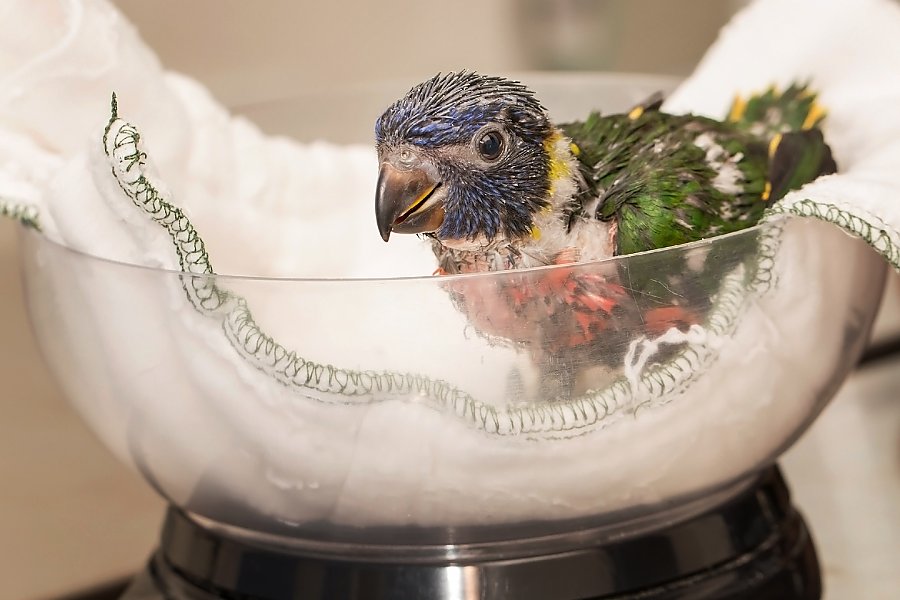
In Focus
Tuesday, May 09, 2017
Let us tell you about the birds and the bees, and the flowers and the trees, the moon up above…and a thing called lorikeet love! Lorikeets are opportunistic breeders who typically mate after a big storm when there is an abundance of food.
With all the rain we received this winter, you can imagine that they were quite busy. As a result, a few lorikeet chicks were hatched here at the Aquarium a couple months ago. Aviculturist Sara Mandel is excited to share her experience raising the chicks behind the scenes.
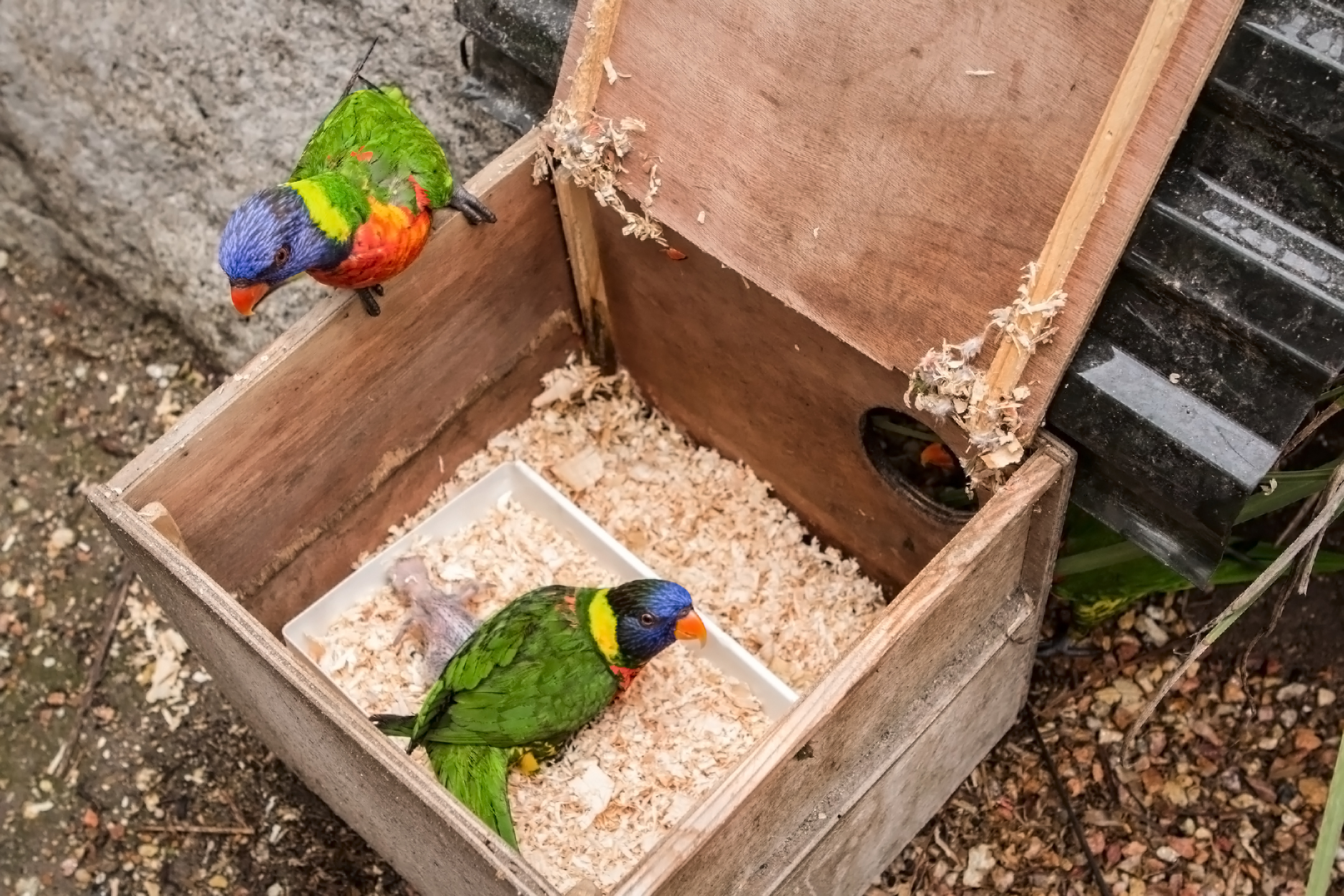
Once the lorikeets started to claim their nesting boxes around Lorikeet Forest, I knew that mating season was upon us. These birds are very territorial creatures and often mate in the same area with the same mate every time breeding season comes around.
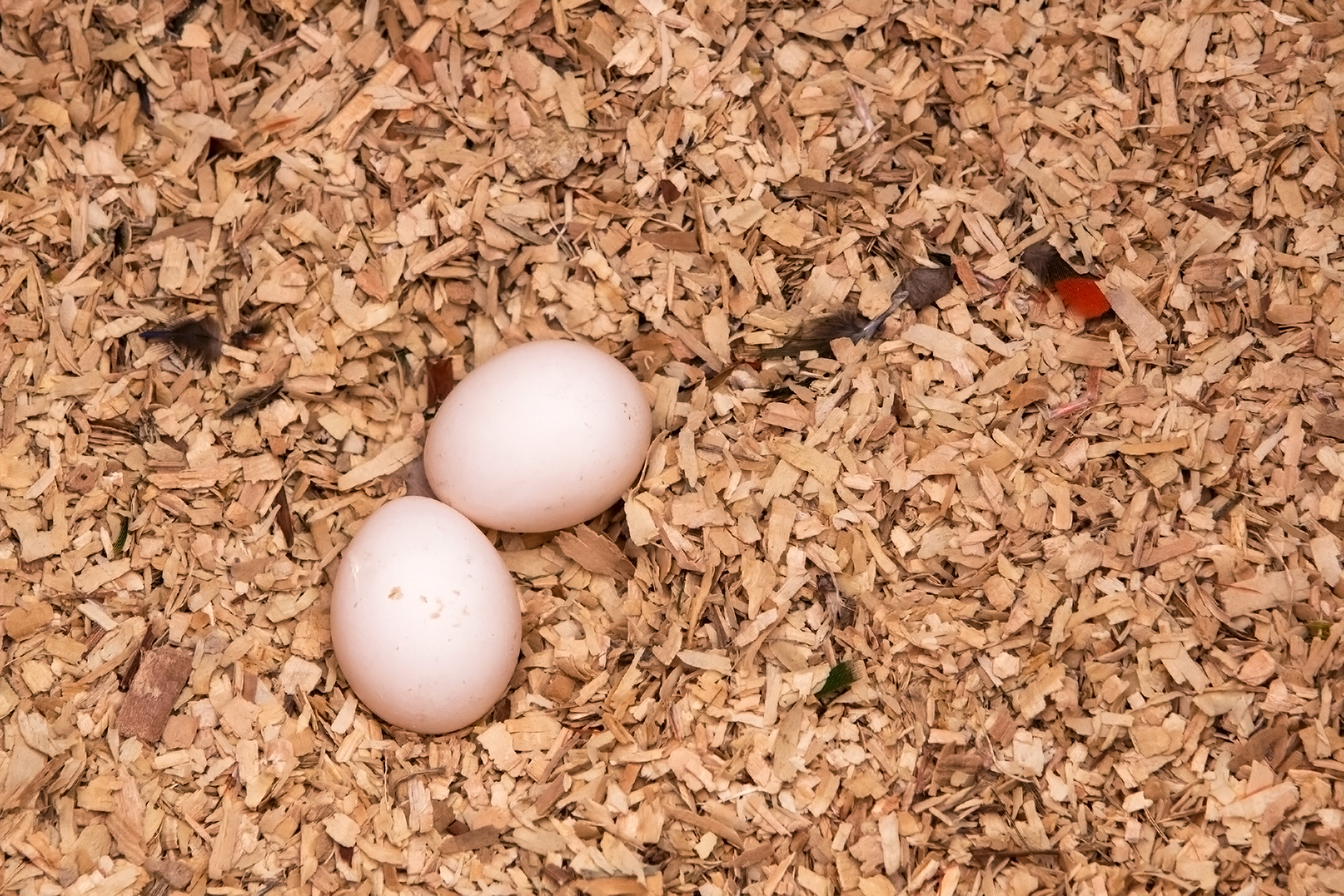
As couples pair up—like Monty and Clara or Yoda and Mothra—we keep an eye on their nests and regularly check to see if they have laid any eggs. Once the egg is laid, both parents take turns incubating it.
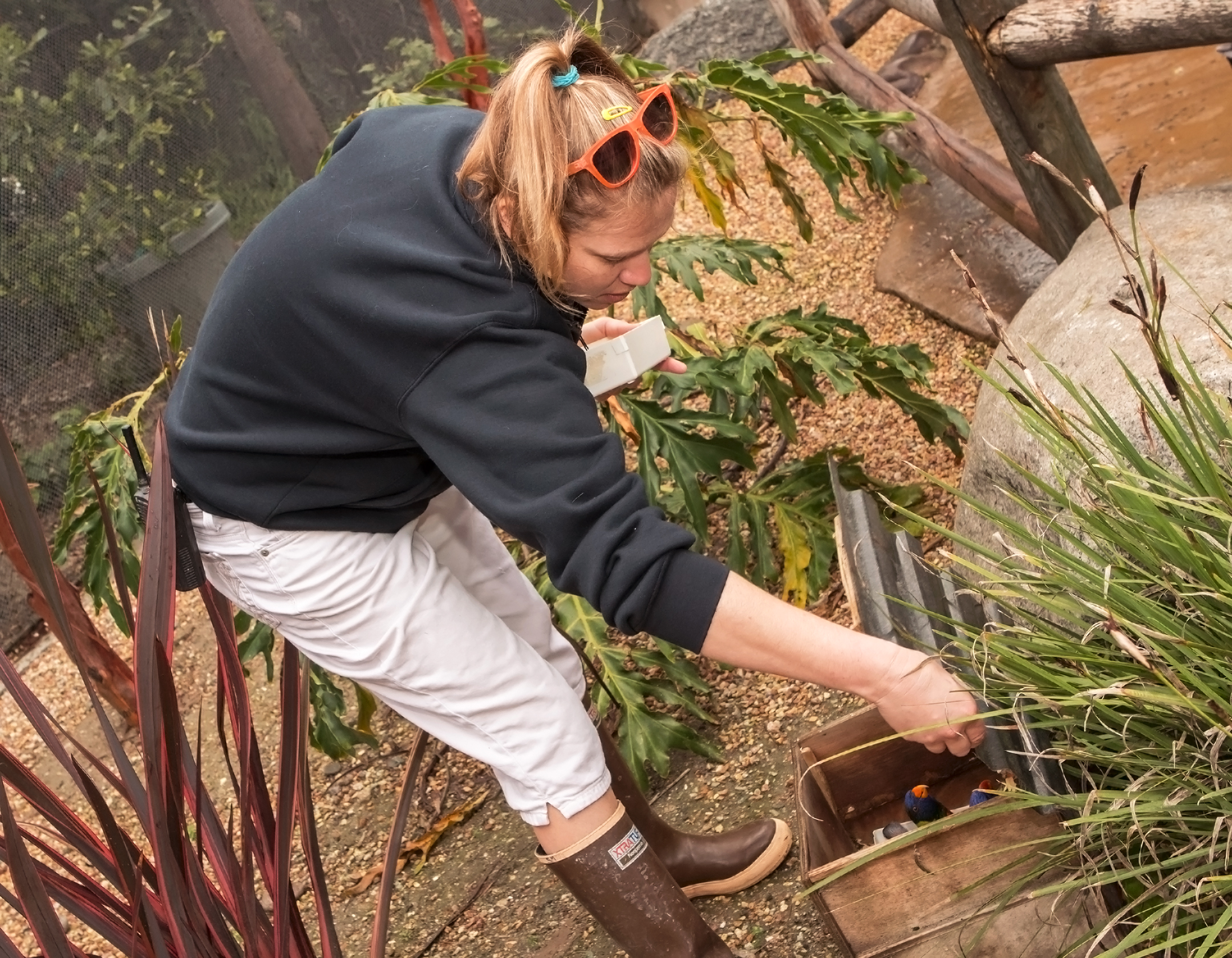
While one bird stays with the nest, the other goes out to collect food. We’ll also drop some extra food in their boxes to make sure they are getting enough to eat.
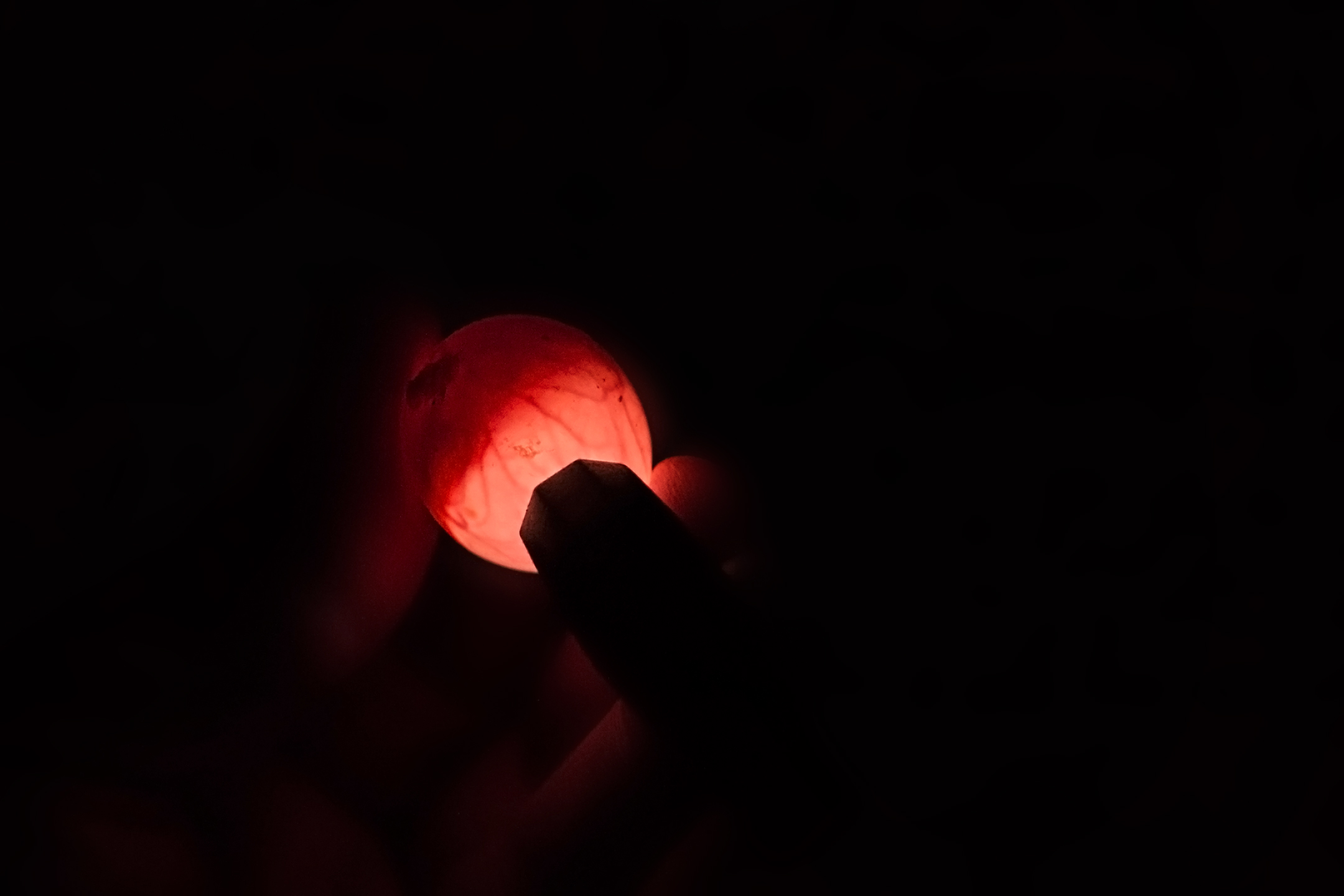
While the birds are nesting, we candle the eggs a couple times to see if they are fertilized. This is an easy process in which we hold the egg up to a flashlight and check out what’s developing inside.
After twenty-four days, incubation time is over and the chick starts pipping (or pecking at the shell) from inside. Ideally, they will pip in a circular shape near the top of the egg, which makes it easy for them to crack the shell and emerge. However, sometimes they pip in a vertical line or in random spots all over the egg, and when that happens we step in and help them out.
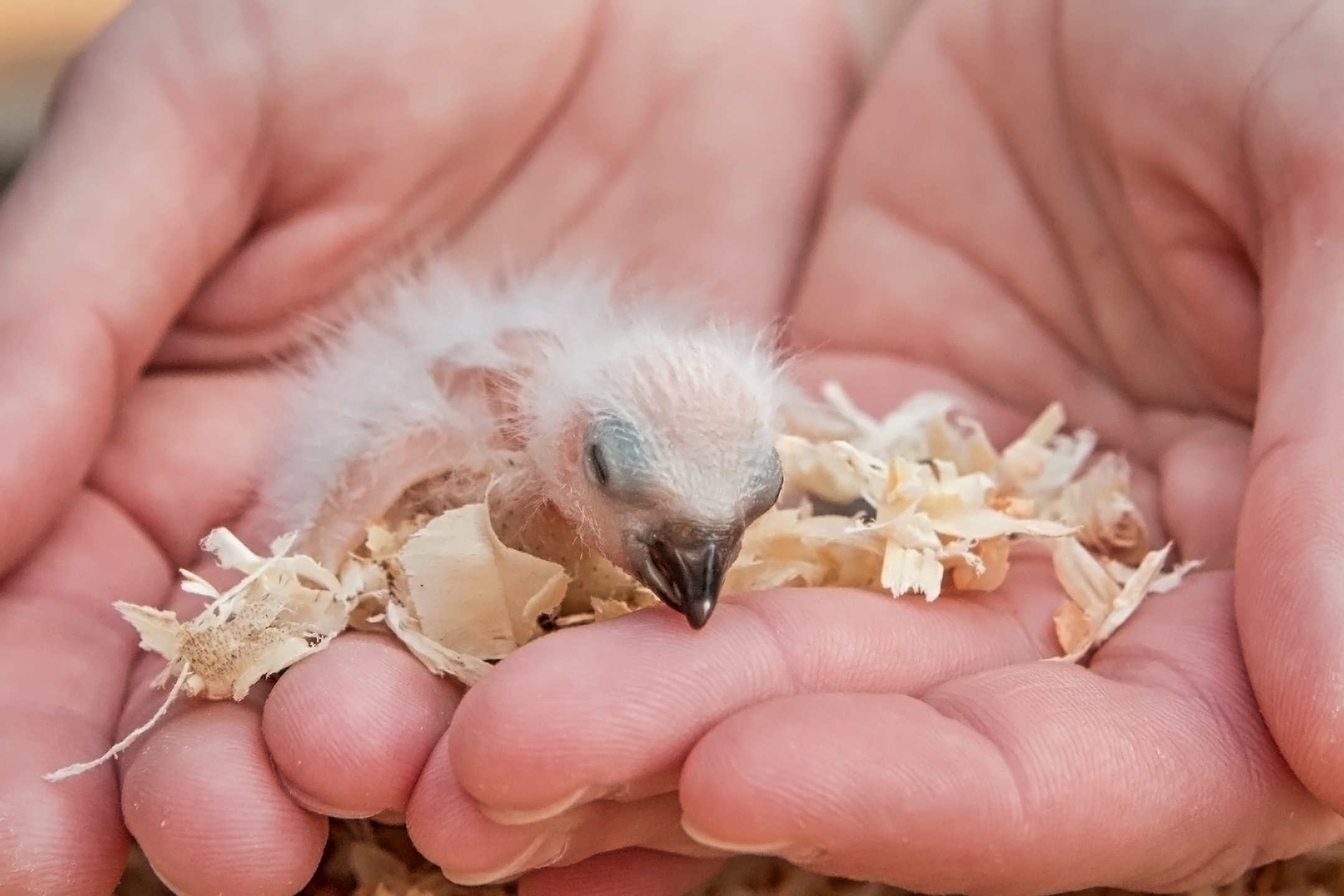
Within one to two days, the chick emerges. Since we want to keep the chicks safe and healthy, we transfer them to a lorikeet nursery behind the scenes.
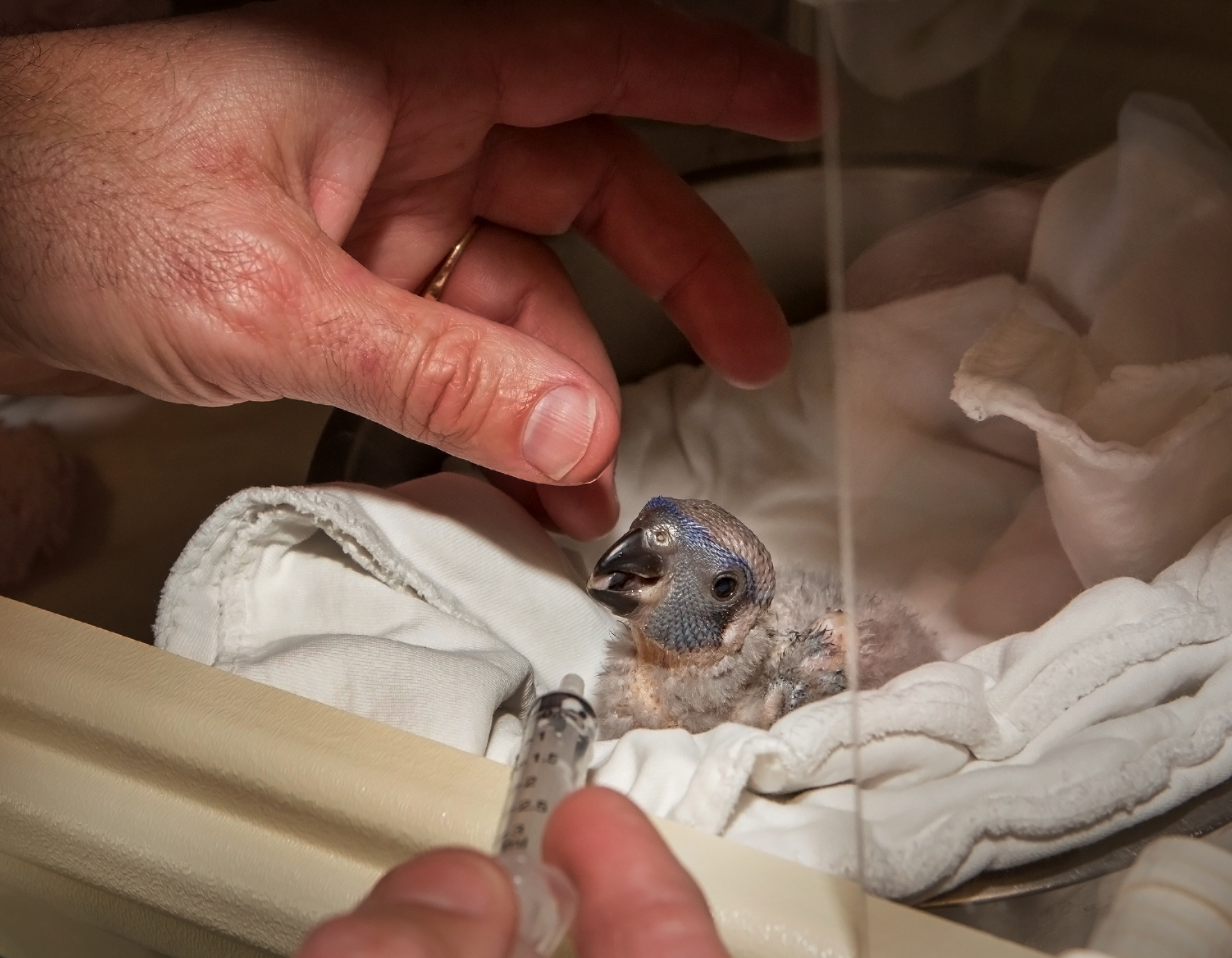
It is very important that the chicks learn to eat. Their brain develops quickly and they grow quite a lot during this time, so they need to eat lots of food to stay happy and healthy! When they are teeny tiny, we feed them a nectar mixture with a syringe.
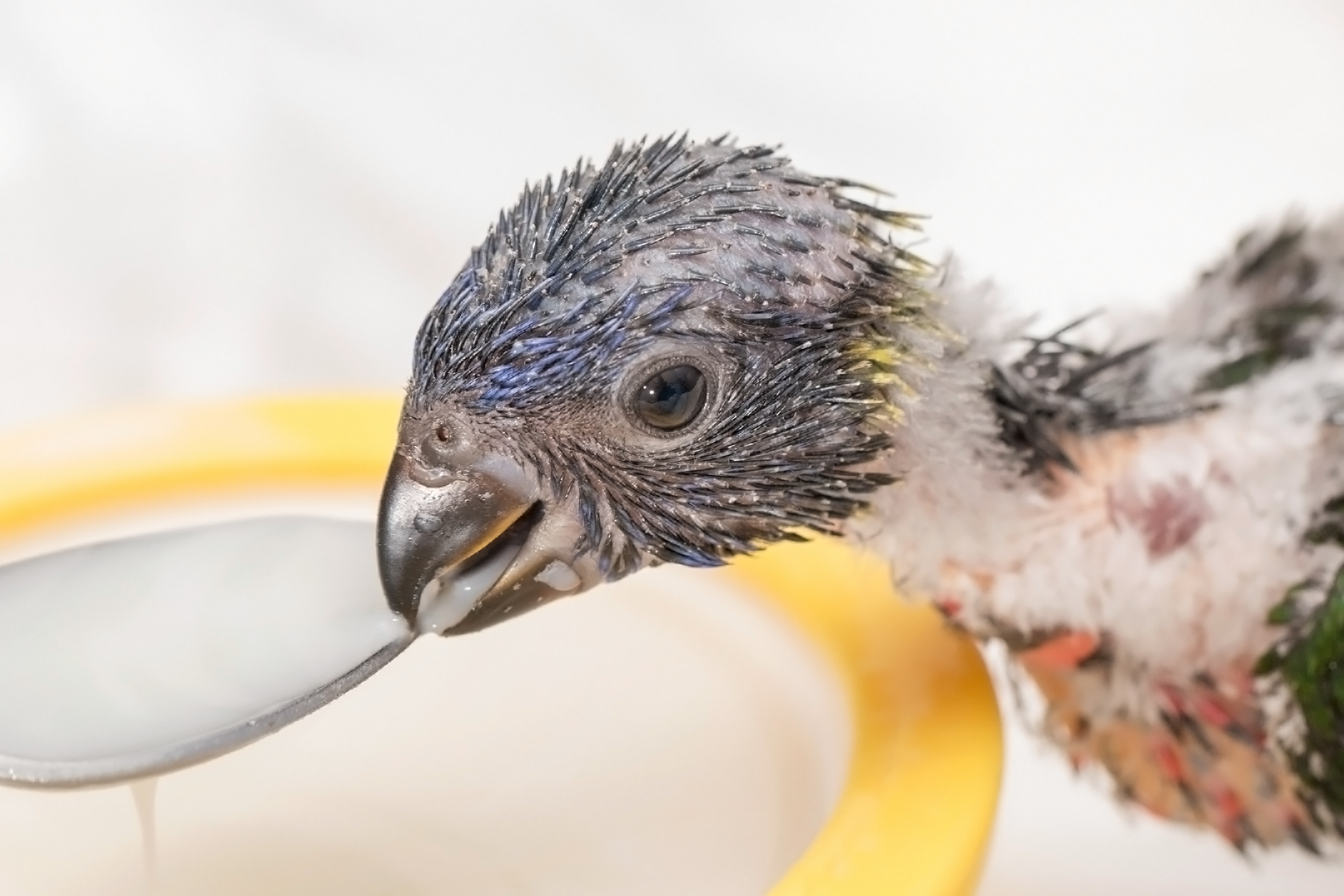
Once they are a bit bigger, we start feeding them with a spoon. Gradually, we will begin lowering the spoon until they are comfortable eating on their own from a small bowl or nectar cup!
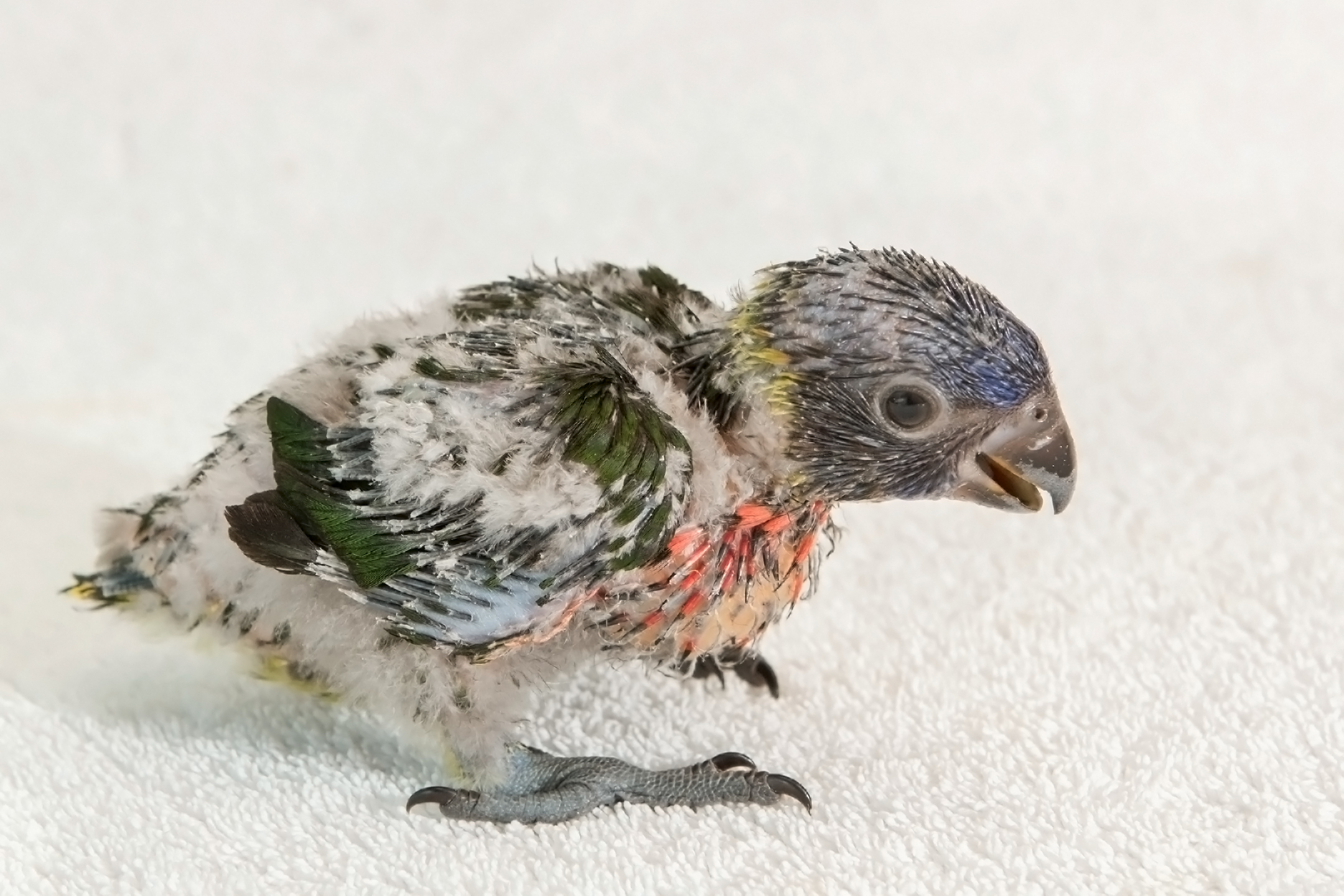
Lorikeets are naturally curious and inquisitive creatures. It’s fun to watch them begin to explore the nursery. When they start nipping and biting the towels, we know it’s time to introduce some animal enrichment. These are toys or puzzles to keep the birds engaged and stimulated in order to enhance their wellbeing.
One beloved toy is a small ball with beads attached to it. By pulling at its different parts, the lorikeet chicks learn how to use their beaks. We also provide them with grapes, hibiscus flowers, rope, and other fun things that they can hop onto and climb.
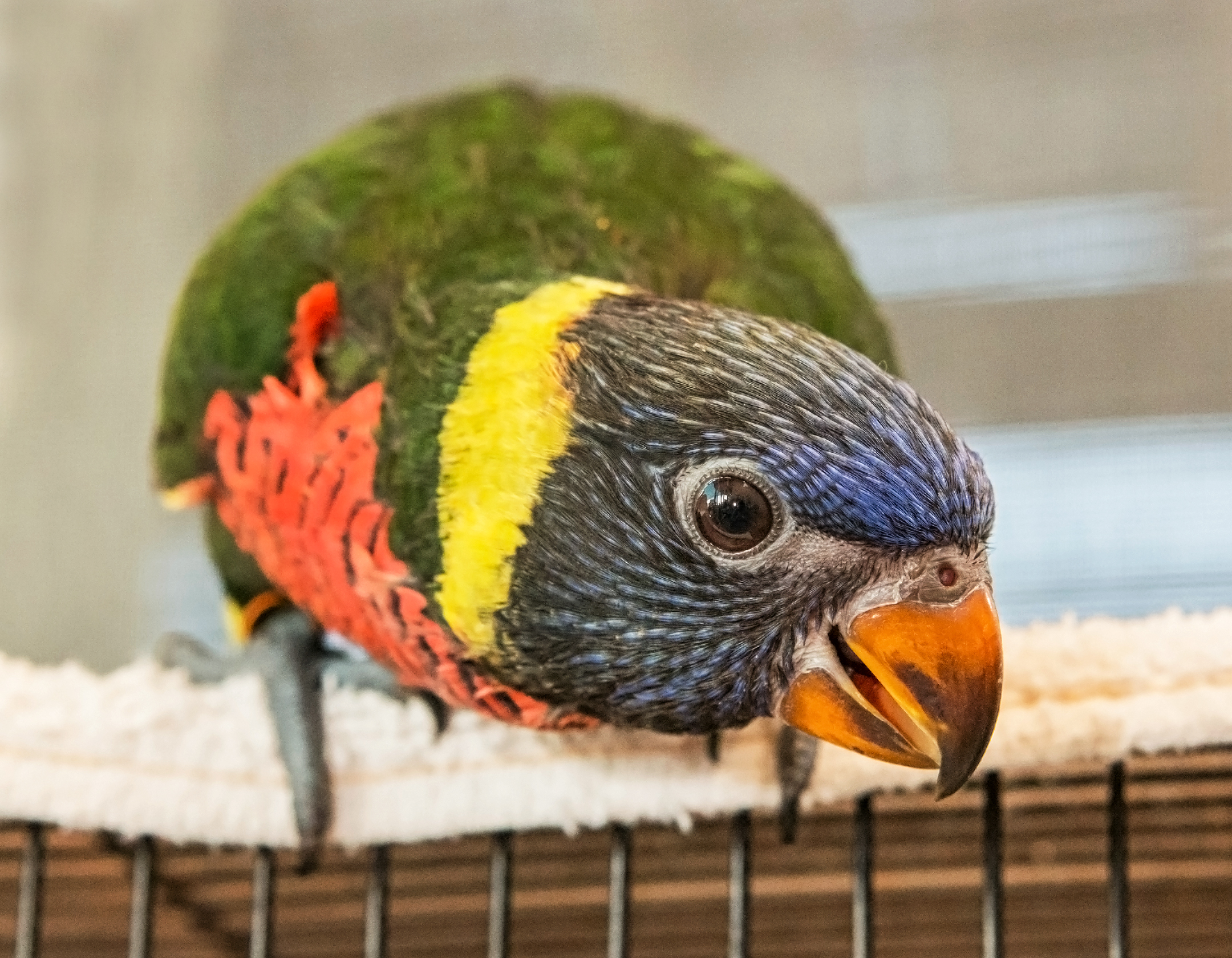
Once they start perching regularly in the nursery, this behavior indicates to us that it’s time to start flying lessons. First, I’ll cup my hands so the lorikeet can perch in my palms. Then, I’ll start to move my hands in swinging motion forward and backward.
It takes a bit of encouraging, but their instincts take over and they leap into flight. Even though I’ve been taking care of these birds since 2010, it’s always a proud moment when they fly for the first time!
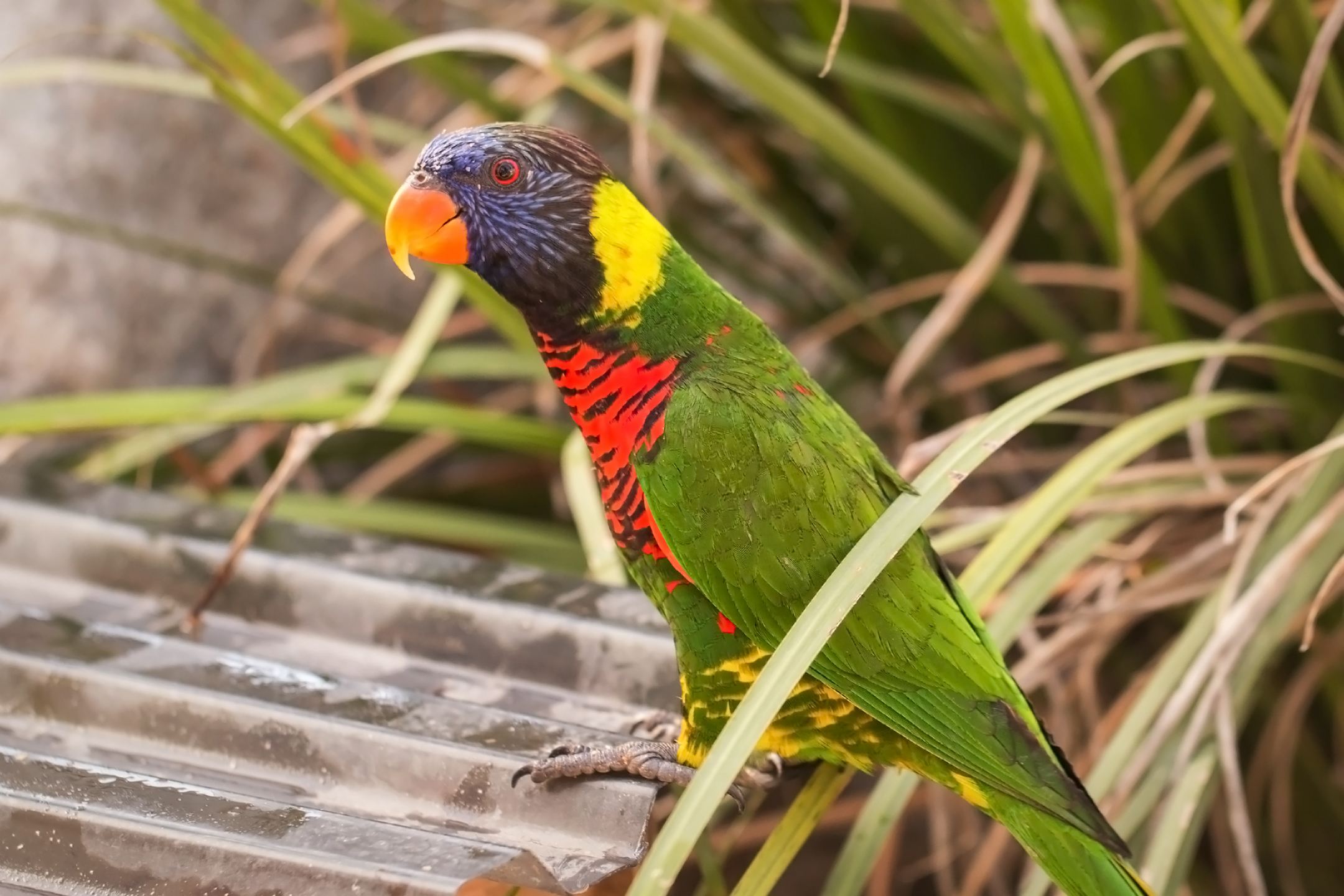
Eventually, we move them to a behind-the-scenes area called The Barn, where some of our lorikeets live before they join the others in Lorikeet Forest.
I always joke that this is where the fledglings truly learn to become lorikeets because the juveniles take the chicks under their wing (pun intended, sorry!). They teach the chicks about pecking order and what it means to be part of a flock.
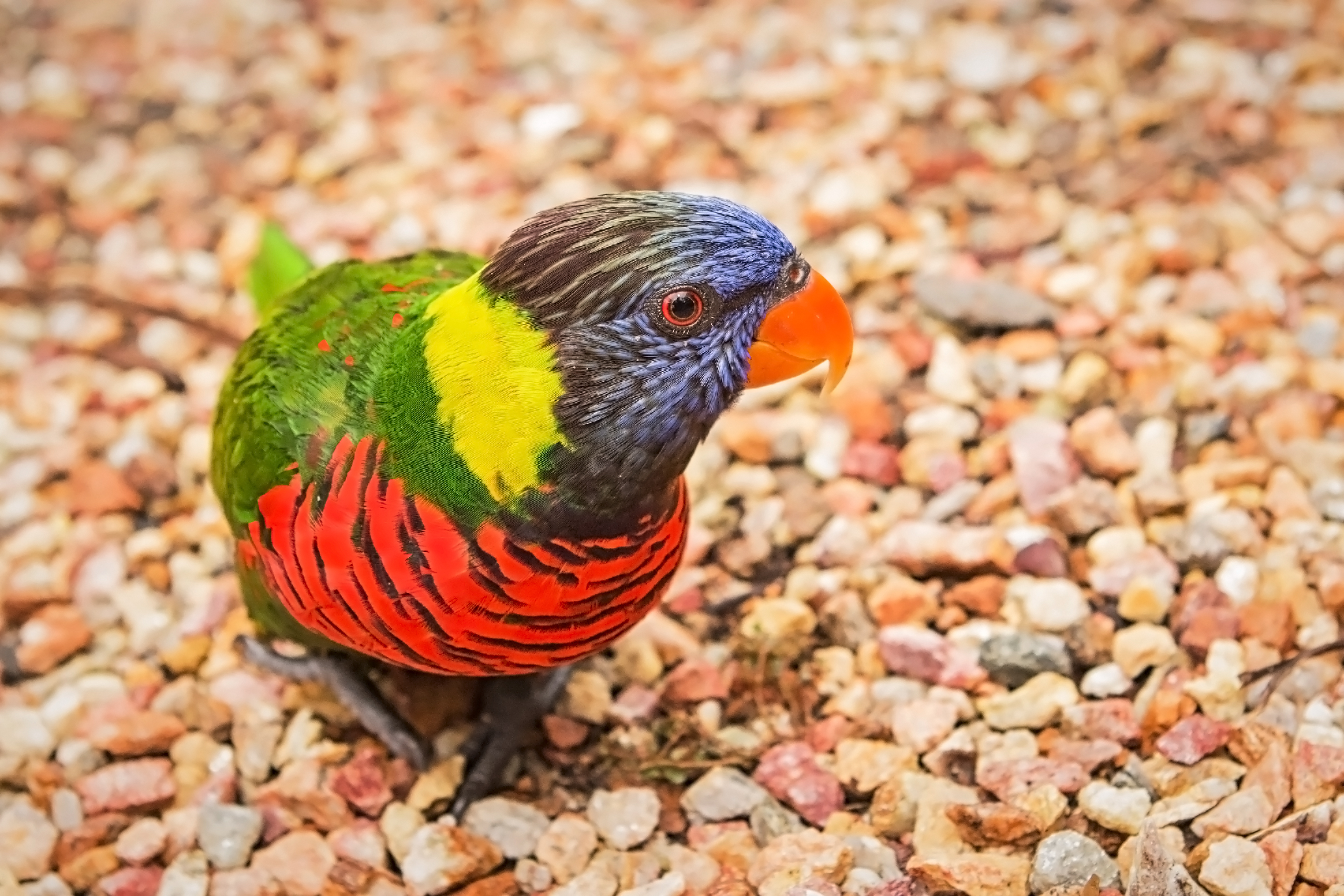
Just like all little ones, the chicks grow up quickly! In only a few months, they go from being small chicks weighing next to nothing, to a full-grown lorikeet, at anywhere from 130 to 150 grams.
In fact, these birds are already old enough and have joined the rest of their bird family in the Lorikeet Forest. I hope you’ll visit them next time you are here!

